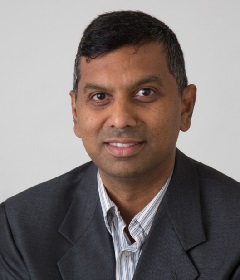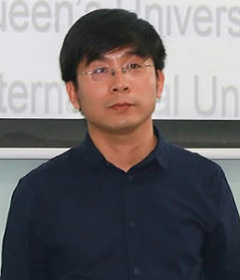Title: Ultra-reliable and Low latency Communications for Industry IoT: Opportunities and Challenges
Keynote speakers:
 Dr. Harish Viswanathan Head of Radio Systems Research Group in Nokia Bell Labs
|  Prof. Trung Q. Duong Chair of Telecommunications at Queen’s University Belfast, UK Research Chair of the Royal Academy of Engineering, UK |
Bio:
Dr. Harish Viswanathan (IEEE Fellow) is Head of Radio Systems Research Group in Nokia Bell Labs. He received the B. Tech. degree from the Department of Electrical Engineering, Indian Institute of Technology, Chennai, India and the M.S. and Ph.D. degrees from the School of Electrical Engineering, Cornell University, Ithaca, NY. Since joining Bell Labs in October 1997, he has worked extensively on wireless research ranging from physical layer to network architecture and protocols including multiple antenna technology for cellular wireless networks, multi-hop relays, network optimization, network architecture, and IoT communications. He has published extensively with over 100 publications. From 2007 to 2015, Harish was in the Corp CTO organization, where as a CTO Partner he advised the Corporate CTO on Technology Strategy through in-depth analysis of emerging technology and market needs. He is a Fellow of the IEEE and a Bell Labs Fellow.
Dr. Trung Q. Duong (Senior Member of IEEE) is a Professor, Chair of Telecommunications at Queen’s University Belfast, U.K and a Research Chair of the Royal Academy of Engineering. His current research interests include wireless communications, signal processing, and machine learning. He has published more than 350 papers with 11,500+ citations and h-index 59. He currently serves as an Editor for the IEEE Transactions on Wireless Communications. He was awarded the Best Paper Award at the IEEE Vehicular Technology Conference (VTC-Spring) in 2013, IEEE International Conference on Communications (ICC) 2014, IEEE Global Communications Conference (GLOBECOM) 2016, IEEE Digital Signal Processing Conference (DSP) 2017, and GLOBECOM 2019. He is the recipient of prestigious Royal Academy of Engineering Research Fellowship (2015-2020) and has won a prestigious Newton Prize 2017.
Abstract:
The limited availability of spectrum in sub 6 GHz bands has created substantial interest in bands above 20 GHz for 5G deployments. Likewise, although high reliability is more easily achieved in lower bands, it is highly likely that mmWave bands will also be considered for low latency, high reliability aplications. In addition to challenging propagation conditions making high reliability difficult to achieve, the use of narrow beams with analog beam forming increases the latency for bursty uplink packet transmissions. We begin with a discussion of emerging applications that require high data rates with ultra-reliability at very low latencies for which mmWave is a natural choice. We then highlight some of the key challenges and describe factory floor channel measurements that show reasonable propagation conditions suggesting viability of mmWave solutions. Finally, we will discuss some novel solutions to achieve high reliability and low latency in these bands.

